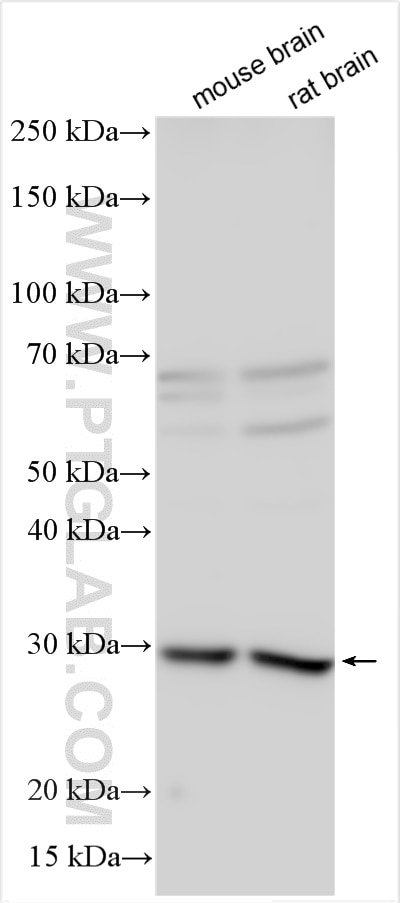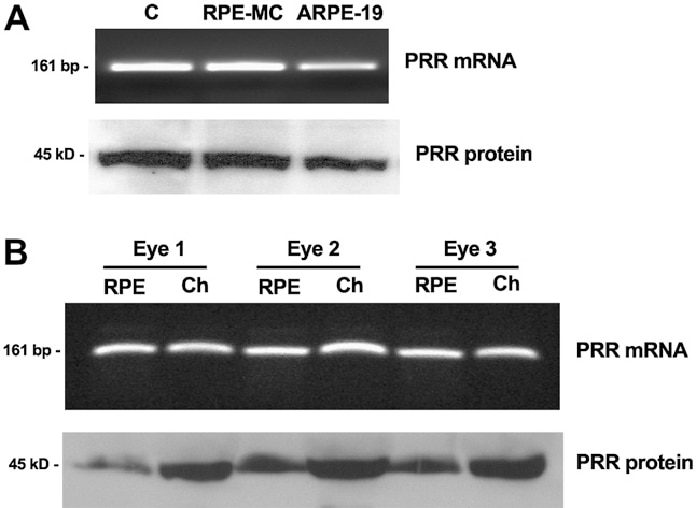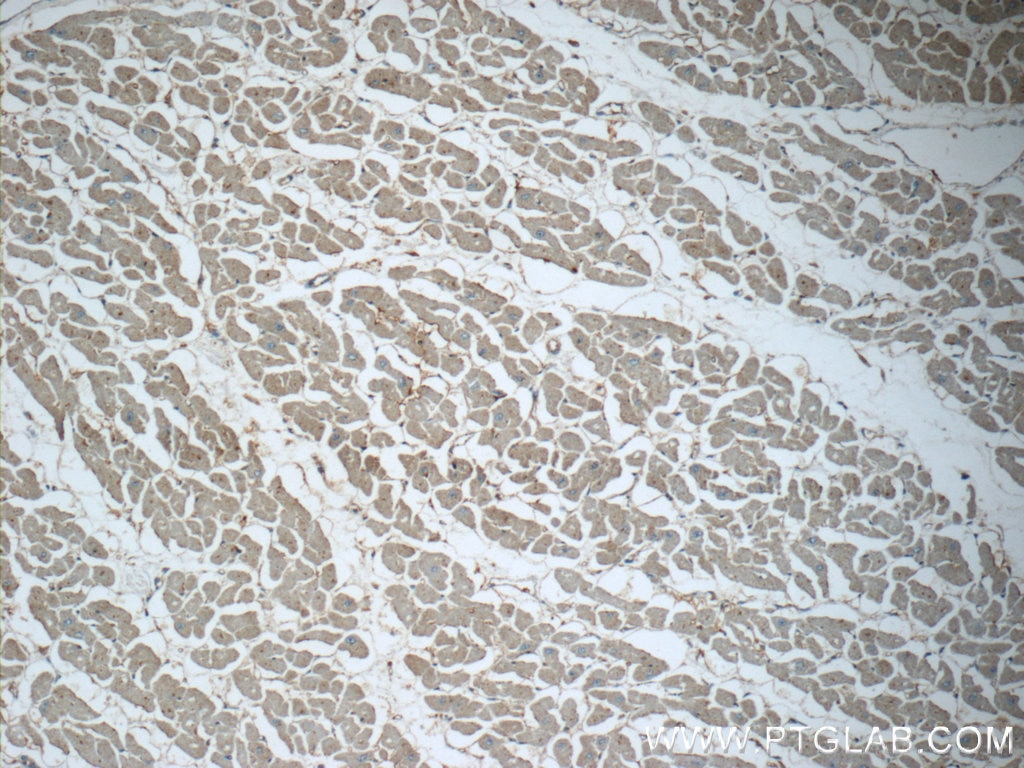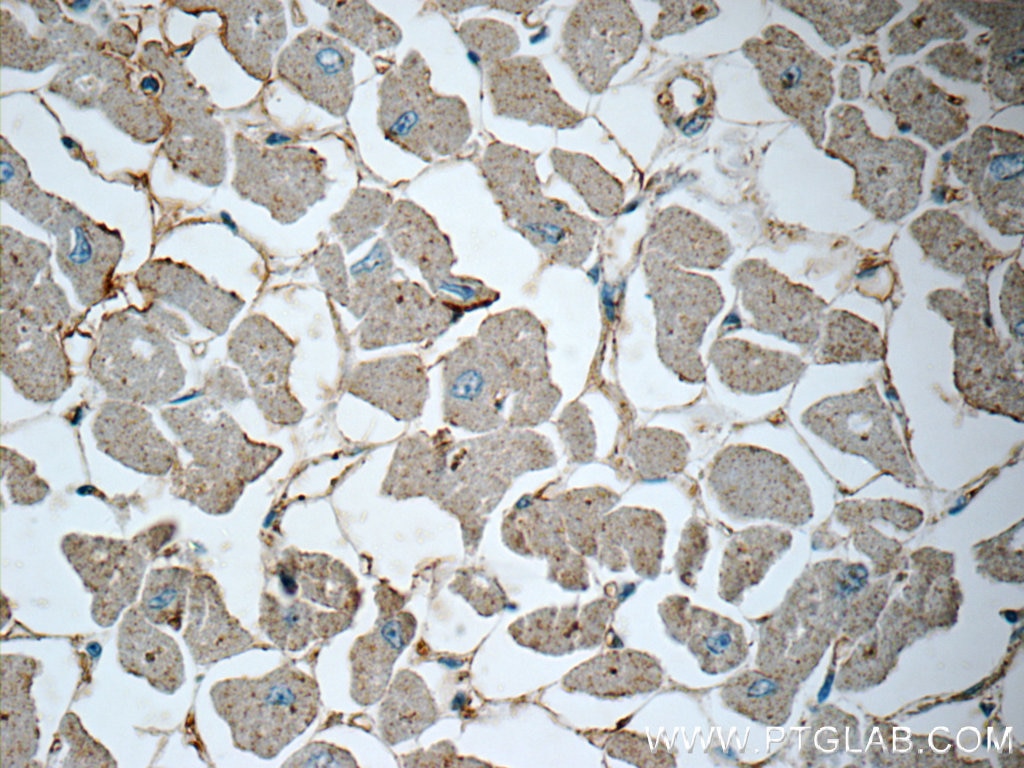Renin receptor, ATP6AP2 Polyclonal antibody
Renin receptor, ATP6AP2 Polyclonal Antibody for IHC, WB, ELISA
Host / Isotype
Rabbit / IgG
Reactivity
human, mouse
Applications
WB, IHC, ELISA
Conjugate
Unconjugated
Cat no : 10926-1-AP
Synonyms
Validation Data Gallery
Tested Applications
| Positive WB detected in | mouse brain tissue, human retinal pigment epithelium tissue, rat brain tissue |
| Positive IHC detected in | human heart tissue Note: suggested antigen retrieval with TE buffer pH 9.0; (*) Alternatively, antigen retrieval may be performed with citrate buffer pH 6.0 |
Recommended dilution
| Application | Dilution |
|---|---|
| Western Blot (WB) | WB : 1:500-1:2000 |
| Immunohistochemistry (IHC) | IHC : 1:20-1:200 |
| It is recommended that this reagent should be titrated in each testing system to obtain optimal results. | |
| Sample-dependent, Check data in validation data gallery. | |
Published Applications
| WB | See 5 publications below |
| IHC | See 3 publications below |
Product Information
10926-1-AP targets Renin receptor, ATP6AP2 in WB, IHC, ELISA applications and shows reactivity with human, mouse samples.
| Tested Reactivity | human, mouse |
| Cited Reactivity | human, mouse |
| Host / Isotype | Rabbit / IgG |
| Class | Polyclonal |
| Type | Antibody |
| Immunogen | Renin receptor, ATP6AP2 fusion protein Ag1360 |
| Full Name | ATPase, H+ transporting, lysosomal accessory protein 2 |
| Calculated Molecular Weight | 39 kDa |
| Observed Molecular Weight | 28 kDa |
| GenBank Accession Number | BC010395 |
| Gene Symbol | ATP6AP2 |
| Gene ID (NCBI) | 10159 |
| RRID | AB_2062201 |
| Conjugate | Unconjugated |
| Form | Liquid |
| Purification Method | Antigen affinity purification |
| Storage Buffer | PBS with 0.02% sodium azide and 50% glycerol pH 7.3. |
| Storage Conditions | Store at -20°C. Stable for one year after shipment. Aliquoting is unnecessary for -20oC storage. 20ul sizes contain 0.1% BSA. |
Background Information
ATP6AP2, also named as ATP6IP2, CAPER, ELDF10, N14F, ATP6M8-9, Renin receptor, and prorenin receptor, is believed to potentiate the renin-angiotensin system (RAS), conferring to prorenin, a likely pathological role at the tissue level. The PRR has been identified in the microvascular endothelial cells of the retina, which seems to be involved in pathological neovascularization processes. The present study demonstrates for the first time that the PRR is expressed in human ATP6AP2 and suggests a molecular mechanism by which hypertension may exacerbate the pathology of dry AMD. ATP6AP2 functions as a renin and prorenin cellular receptor. It may mediate renin-dependent cellular responses by activating ERK1 and ERK2. By increasing the catalytic efficiency of renin in AGT/angiotensinogen conversion to angiotensin I, it may also play a role in the renin-angiotensin system (RAS). Defects in ATP6AP2 are a cause of mental retardation X-linked with epilepsy (MRXE). The full length of ATP6AP2 protein is 39 kDa, and the band with an apparent molecular weight of 28 kDa is the soluble form.(PMID:19580809; PMID:28215051; PMID:34534267; PMID: 29127204)
Protocols
| Product Specific Protocols | |
|---|---|
| WB protocol for Renin receptor, ATP6AP2 antibody 10926-1-AP | Download protocol |
| IHC protocol for Renin receptor, ATP6AP2 antibody 10926-1-AP | Download protocol |
| Standard Protocols | |
|---|---|
| Click here to view our Standard Protocols |
Publications
| Species | Application | Title |
|---|---|---|
J Clin Invest mTORC1 feedback to AKT modulates lysosomal biogenesis through MiT/TFE regulation. | ||
Exp Eye Res (Pro)renin receptor is expressed in human retinal pigment epithelium and participates in extracellular matrix remodeling. | ||
Int J Clin Exp Pathol MicroRNA-140-3p inhibits proliferation, migration and invasion of lung cancer cells by targeting ATP6AP2. | ||
Cell Biosci PABPN1 regulates mRNA alternative polyadenylation to inhibit bladder cancer progression | ||
Placenta Endothelin-1 production via placental (pro)renin receptor in a mouse model of preeclampsia |





